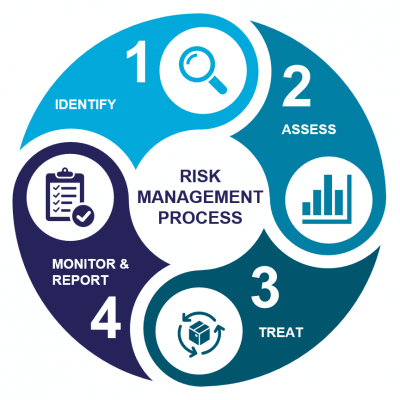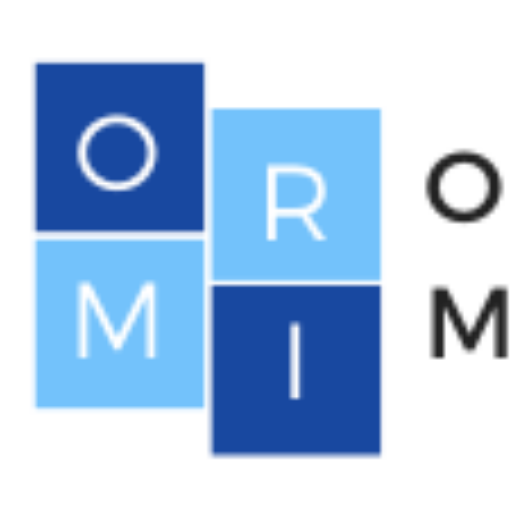Certificate in Risk Management

What Will You Learn?
- By the end of this module, you should be able to:
- • Recognize the origins and key concepts relating to risk management
- • Compare and contrast the main risk management standards
- • Apply the concepts of risk management
- • Examine the main approaches to risk identification
- • Use the main approaches to the analysis and evaluation of risk
- • Distinguish the main features of risk control techniques
Course Content
Module 1: Principles of Risk and Risk Management
This module introduces the history, principles, and concepts of risk and risk management to help students understand the current drivers of risk management and the development and impact of international standards. This leads to examining how risks are classified and the models or frameworks utilized to identify, assess, and treat them.
By the end of this module, you should be able to:
• Recognize the origins and key concepts relating to risk management
• Compare and contrast the main risk management standards
• Apply the concepts of risk management
• Examine the main approaches to risk identification
• Use the main approaches to the analysis and evaluation of risk
• Distinguish the main features of risk control techniques
Unit 1: Concepts and Definitions of Risk and risk management
A general introduction to some basic risk management concepts
-
Approaches to defining risk
-
Impact of risk on organizations
-
Types of risk
-
Development of risk management
-
Principles and aims of risk management
UNIT 2. Risk management standards
Explores the main features of key risk management standards, including the most generally accepted ISO 31000 standard (ISO,2018) as well as some specialist risk management standards.
-
General risk management Standards and risk management frameworks
-
Alternative risk management approaches.
UNIT 3. Risk Management
An overview of risk management. Understand how it can be implemented, in what context and the role of objective setting.
-
Defining Risk Management
-
Risk management overview
-
Implementing Risk management
-
Establishing context for risk management
-
Objective setting
UNIT 4. Risk Assessment 1 (Introduction and Identification)
Risk assessment is a key element of the process of RM. This module introduces the wide-ranging subject following the ISO 31000 process.
-
Risk assessment considerations
-
Risk causes and consequences
-
Risk classification systems
UNIT 5. Risk Assessment 2 (Analysis and Evaluation)
This unit focuses on two elements, risk elements, risk analysis, and risk evaluation. Other professional standards are also examined.
-
Introduction to risk analysis
-
Risk likelihood and impact
-
Risk evaluation and risk appetite
-
Loss control
-
Defining the upside of risk
UNIT 6. Risk Response and Risk Treatment
A conclusion of the module, completing the RM process and considering risk treatment
-
Introduction to the topics
-
The 4 Ts (treatment, tolerate, transfer, terminate)
-
Risk control techniques
-
Control of selected hazard risks
-
Introduction to monitoring and review
-
Insurance and risk transfer
-
Business continuity planning
Module 2. Practice of Risk Management
This module explores the impact of the business environment on organizational risk, and examines issues relevant to various sectors, geographical areas, and stakeholders, including regulatory authorities. It covers how corporate governance and risk assurance might influence the architecture of risk management programs, and the significance of risk culture, appetite, and tolerance of current practices.
Main learning outcomes
By the end of this module, you should be able to:
• Discuss the impact of the wider business environment on organizations and the issues this raises for risk management in specific sectors and geographical areas.
• Illustrate the key features of a risk management framework
• Explain the significance of issues of culture, appetite, and tolerance, as well the key features of corporate governance models, project risk, and operational management systems
• Discuss the nature and purpose of internal control, audit, and risk assurance techniques
• Analyze real-life case studies and identify key risk management lessons.
UNIT 1. The Global business environment
The implications of the business and risk environment on organizations and appropriate responses
-
The business and risk environment
-
Organizational vision and values
-
Risk management, business success and value added
-
Sector specific and geographical issues
UNIT 2. Risk Strategy and Framework
The importance of a coherent risk framework, strategy and protocol, and the appropriate role of risk management documentation.
-
Risk Architecture, strategy and protocols
-
Risk management documentation and responsibilities.
UNIT 3. Risk Culture, appetite and Tolerance
How an organization’s approach to risk management is significant. How to create effective risk profiles to manage this and what makes a great risk practitioner.
-
Organizational Behavior and Culture
-
Risk appetite and tolerance
-
Risk training and communication
-
Risk practitioner competencies
UNIT 4 Risk and Organizations
Key features of international corporate governance, how to manage regulatory bodies and various facets of risk management
-
Introduction to corporate governance
-
Identifying stakeholders, including regulatory bodies
-
Project, operational and supply chain risk management
UNIT 5. Risk assurances and reporting
Important features of an effective control environment and how auditing and other risk assurance techniques fit within the risk management framework
-
The control environment
-
Internal audit function
-
Risk assurance techniques
-
Risk reporting
-
corporate reputation.
UNIT 6. Case studies in organizational risk management
Case studies that give important insights into how risk events occur, and the lessons that can be learned from them. Also covers the challenges of understanding emerging risks
-
Case Studies in Organizational risk Management
-
Emerging risks and future developments

